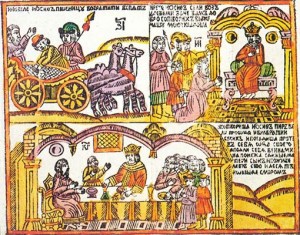The San Gemini Preservation Studies Program, now in its 14th year, is dedicated to the preservation of cultural heritage and offers students the opportunity to study and travel in Italy. The 2013 summer session is open for applications.
Deadline for application: March 15, 2013.
The 2013 courses offered are listed below. Check their website for more information about the application, housing, etc.
Building Restoration* (May 26th–June 22th)
Introduction to Art and Building Restoration in Italy
Surveying and Analyzing Historic Buildings
Ceramics Restoration (May 26–June 22)
Introduction to Conservation of Archaeological Ceramics
Workshop on Ceramics and Ceramics Conservation
(NEW) Book Bindings Restoration* (May 26–June 22)
Introduction to the Restoration of Book Bindings
Workshop on the Restoration of Book Bindings
Paper Restoration* (July 7–August 3)
Introduction to Restoration of Paper in Books and Archival Documents
Restoration Workshop – Paper in Books and Archival Documents
Traditional Painting Materials & Techniques (July 7–August 3)
Traditional Painting Methods and Techniques in Italy, including Issues of Weathering and Aging
Painting Workshop – Traditional Painting Methods and Techniques in Italy
Preservation Theory and Practice in Italy (July 7–August 3)
Restoration in Italy – Issues and Theory
*Field Projects:
Restoration of the Porta Burgi (12th-century city gate in San Gemini)
Surveying the 12th-century San Giovanni Battista Church complex
Archaeological survey of the public baths in Carsulae
San Gemini Historic Archives Project (restoration and digitalization of 16th- to 18th-century archival material)
The courses are open to students from various disciplines, both undergraduate and graduate. All lessons are taught in English.
Source: Email announcement from Max Cardillo, Director, San Gemini Preservation Studies Program




